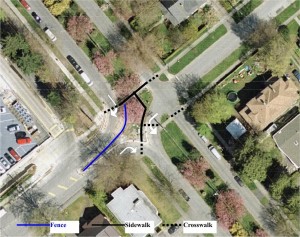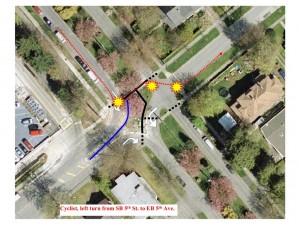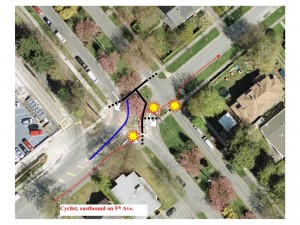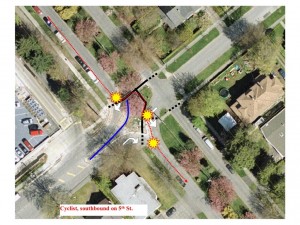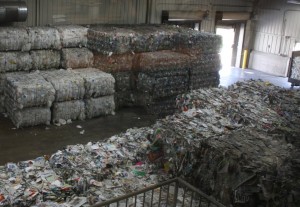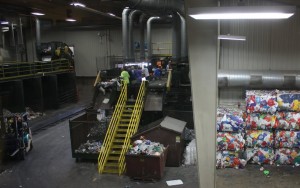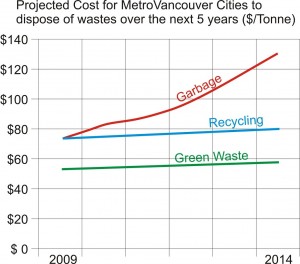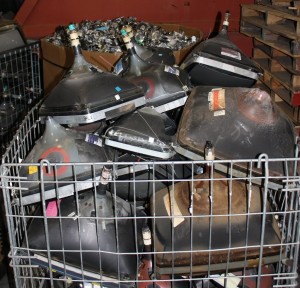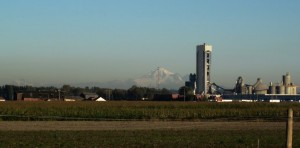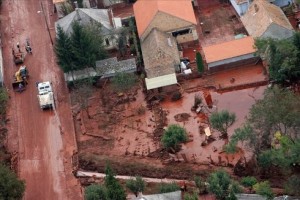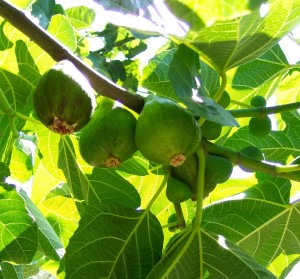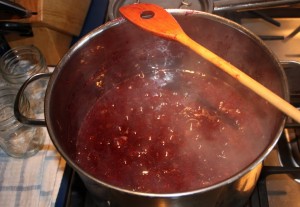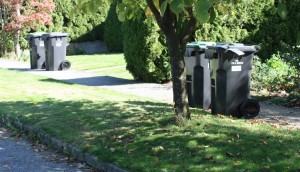Thank you Tom.
A good example of this is the long-running issue that we in the New Westminster cycling world know simply as “5th and 5th”That phrase is now one that causes anyone involved to roll their eyes emit an audible groan. This is a nice residential neighborhood, with a couple of quiet, traffic-calmed streets, that happens to border a commercial building where (amongst other commercial upgrades) Save On foods opened a new retail outlet. Coincident with this opening, the world’s ugliest fence was installed. As if an ugly fence to stop people walking through their neighbourhood was ever a good idea, but I digress again.
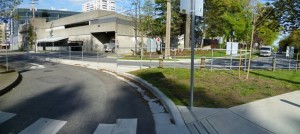
Now that the problems have been brought to Transportation staff (via PBAC and the VACC), they say they will review the plans. No doubt this will cost staff time and money, so they will have to wait until resources are available. But that is not the point. The design, as it is, requiring expensive re-design should never have been installed! Any member of the PBAC could have gone to the site during the design phase and predicted this problem. Any professional transportation engineer, if asked to review the situation for bicycle and pedestrian access, would never have approved this design. It was a much-up from the start, because they simply didn’t think about what they were doing. It was a Ad-hoc approach to a problem, poorly executed, and it will costs us (the taxpayers) more money because of that approach.
Now I see the City is advertising to hire a new transportation engineer , presumably to replace a senior person in transportation who moved onto another Municipality recently. The fact the posting lacks any reference to alternative-mode planning or sustainable transportation, well, I can let that pass assuming those types of skills would come up in the screening / interview process. But is not a good sign when your City, which brags about it’s 47% “sustainable travel mode share” downtown, and it’s new “transportation demand management system” requires its new transportation engineer to drive a private vehicle to work!.
More of the same.
